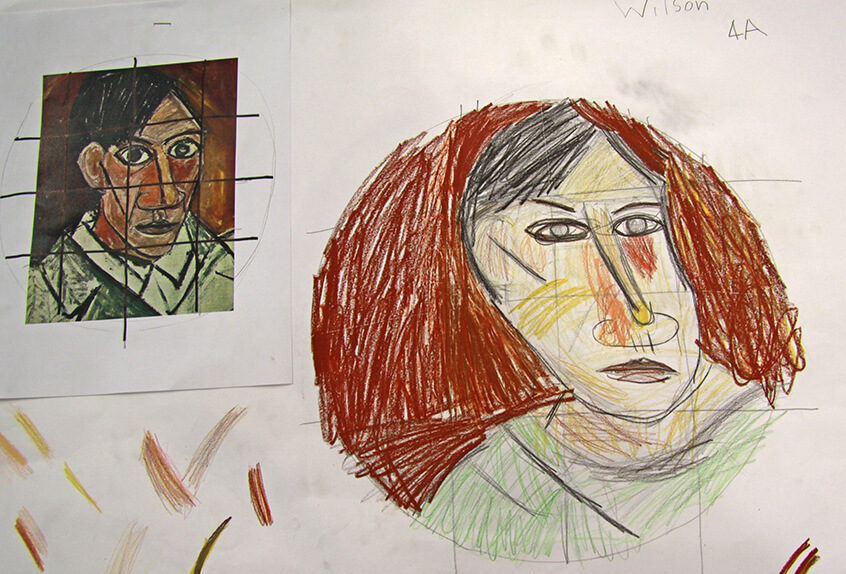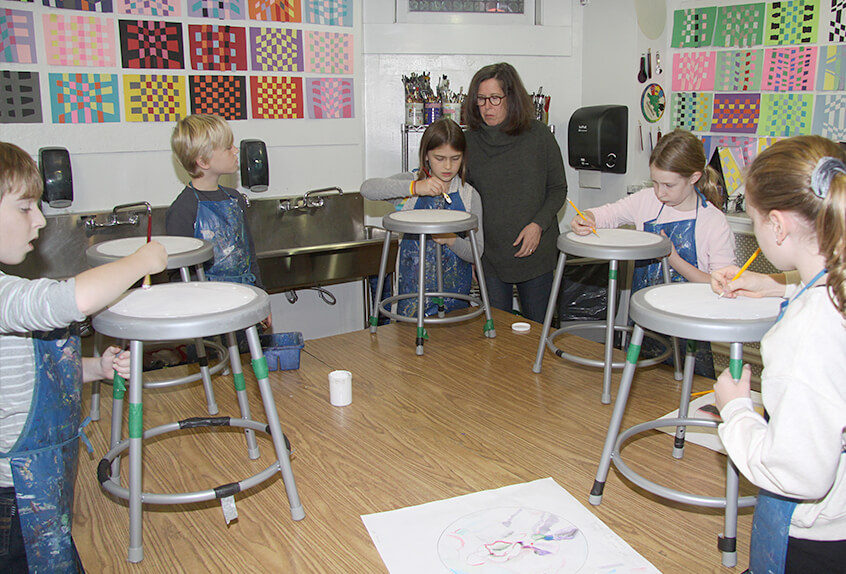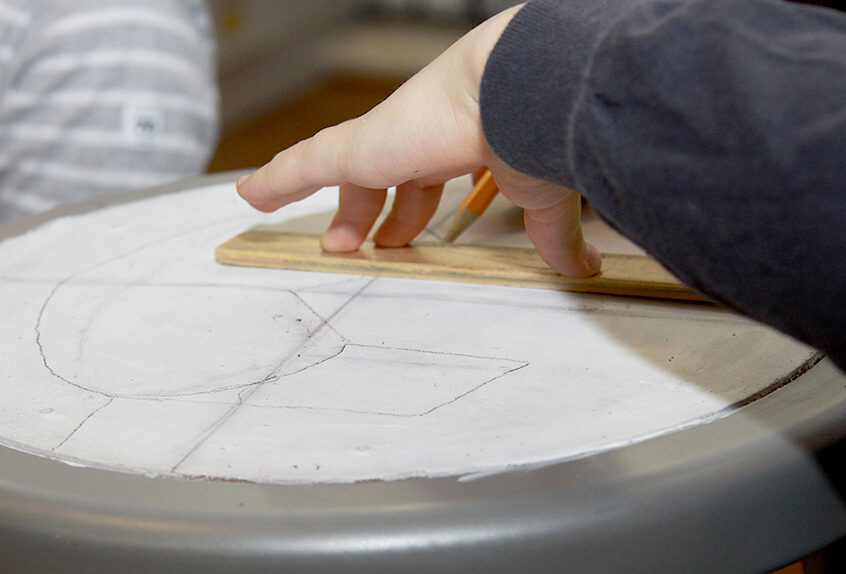News
Bursts of color, foreign landscapes, classic portraits. Surrealism, realism, still lifes. Our fourth graders choose artwork that speaks to them, then answer the call by recreating it on the seats of four-legged metal stools that they’ll keep as mementos for the rest of their lives… after showing them off to their proud parents.
In Visual Arts teacher Patti Smith’s art studio, students spend months channeling their inner artists by studying the greats, then painstakingly recreate their works with focus, dedication, and of course, a touch of the muse, perhaps connecting with what inspired the original works.
In September of their fourth grade year, the students choose which piece of art they would like to replicate. It might be a self-portrait by Pablo Picasso, “The Scream” by Edvard Munch, or a landscape of rolling mountains.
Each student clips a small print of the artwork to a large piece of poster paper: their inspiration. To the right, they have drawn a circle in pencil the same dimensions as the top of the stool. The circle is divided into quadrants. The students then begin to sketch the artwork in the circle, using the quadrant lines as guides. They try to match the colors and shades in their painting. Patti Smith walks from table to table where young artists may be determining the shading of a peach, a winter sky, or. in one case. mouth-watering slices of cake.
Large brown cardboard boxes arrive in the studio in late October and the students excitedly unpack the silver stools. After students have finished their sketches, they use sandpaper to smooth the seats, prepping them for what’s to come.
Smith shows the students how to apply a coat of gesso (a primer) to the smooth seats. They place their stools on top of the art table, bringing them closer to eye level. Using a ruler, they lightly draw another set of diameter guidelines in pencil on the top of the stool and then begin to transfer their sketch onto the seat.
Slowly the image of Pablo Picasso or a chocolate cake or a ship at sea begins to take shape. The artist carefully measures and considers where a line should begin and extend.
Before painting begins, they sit around the art table with Ms. Smith to discuss color and the color palette, beginning the search for the perfect blue, yellow, or magenta. Smith shows them how to make a series of color swatches, adding just a bit more white or green or yellow to get the shade they need.
After weeks of careful painting they emerge with an artwork they will treasure for years, a beautiful tribute to the artists who came before them and a testament to the artists they’ve become.















